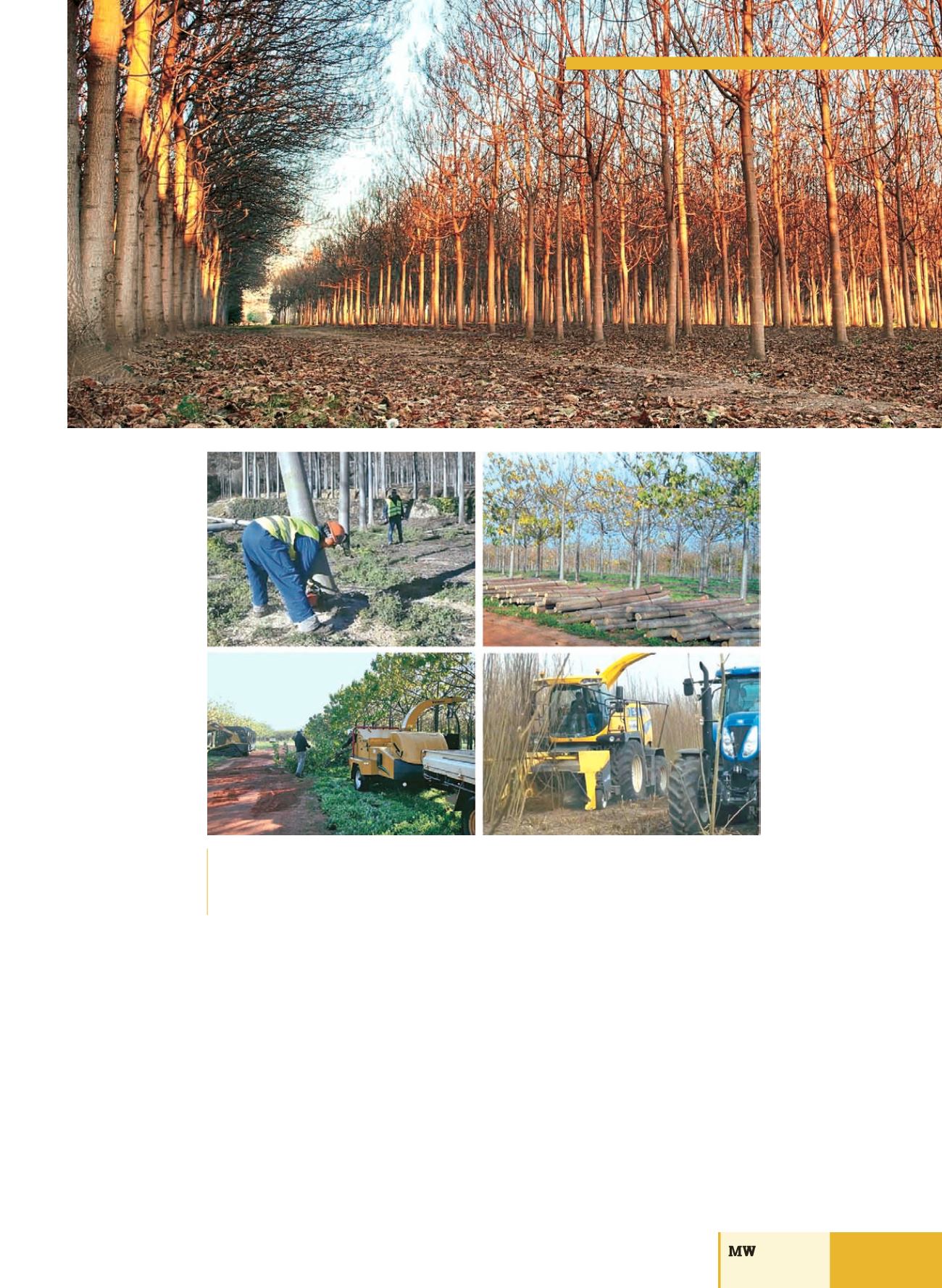

ghe, con l’ausilio di
scale o cestelli ele-
vatori, al fine di ot-
tenere un tronco
rettilineo, privo di
nodi e difetti. Vice-
versa, per la bio-
massa si punta al-
la massimizzazione
della produzione
del legno indipen-
dentemente dalla
sua conformazione
e pezzatura, e per-
tanto in questo ca-
so non sono ne-
cessari né il taglio
tecnico né la sra-
matura di base, per
cui da questo pun-
to di vista la colti-
vazione è assai
meno onerosa.
La raccolta
Se destinata alla
produzione di serra-
menti, mobili, stru-
menti musicali, ecc.
la raccolta del legname di Paulownia viene eseguita con le tra-
dizionali motoseghe, gestendo poi le fasi successive (srama-
tura, deprezzamento, concentramento e trasporto) come un
normale cantiere di tipo forestale. Nel caso di gestione di no-
tevoli superfici (qualche centinaio di ettari) la meccanizzazione
della raccolta potrebbe proficuamente prevedere anche mac-
chinari espressamente dedicati all’ambito forestale, quali gli
harvester dotati di appositi processori oppure processori mon-
tati su macchine movimento terra. Se, viceversa, il materiale è
stato allevato a ceduo e poi destinato alla filiera legno-energia,
si può intervenire con macchinari simili a quelli adottati per al-
tre essenze simili (ad es. il pioppo), ovvero con il taglio tradi-
zionale con la motosega e la successiva cippatura in loco, op-
pure con taglio e riduzione in scaglie operati direttamente da
una trinciacaricatrice dotata di una testata dedicata.
Domenico Pessina
trunk with no
knots or de-
fects.
In the case of
trees for bio-
mass produc-
tion, on the
other hand,
the production
of wood must
be maximised;
shape and size
of the plant
are not impor-
tant, so cuts
and elimina-
tion of bran-
ches at the ba-
se of the trunk
are not neces-
sary. With re-
gard to these
aspects culti-
vation is less
costly.
Harvesting
For produc-
tion of win-
dows and doors, furniture, musical instruments, etc., log-
ging is carried out with traditional chain saws, managing
the following stages (delimbing, concentration and tran-
sport) the same way they would be managed in any other
forest site. If the area is very large (hundreds of hectares)
harvest mechanization would profit from dedicated fore-
stry machinery, such as harvesters equipped with proces-
sors or processors mounted on earthmoving machines.
If, on the other hand, the material has been cultivated and
sold to the wood-energy industry, the machinery needed is
similar to that used for other tree species (e.g. poplar); a
traditional cut is performed with a chain saw and chipping
occurs on site, or, after the tree has been felled, the wood
is reduced to chips by a shredder equipped with a specific
head.
Domenico Pessina
Per ottenere legname da opera, la Paulownia viene raccolta tramite il tradizionale taglio e concentramento (sopra),
mentre il cippato può essere prodotto direttamente in campo, con una cippatrice dopo il taglio dei cedui o
direttamente con una trinciacaricatrice (sotto)
In order to obtain timber, the Paulownia tree is felled with a traditional cut and the wood is gathered, while
chipping can be carried out on site, with a wood chipper after coppicing, or with a shredder (below)
105
n. 12/2016
NUOVE COLTURE
|
NEW CROPS
















